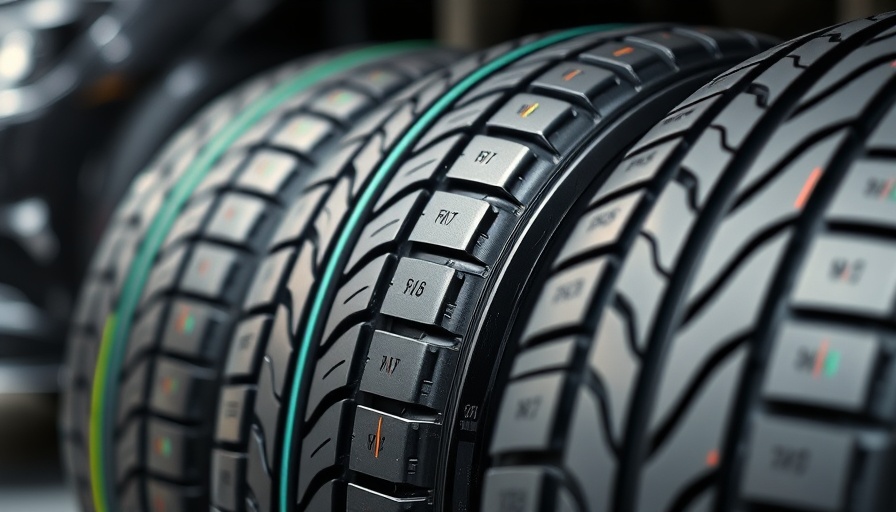
Understanding the Significance of Tire Markings
When purchasing new tires, it can be tempting to overlook minor details such as the colored lines found along the tread. However, these vibrant stripes hold essential information about the tire's performance and handling capabilities. Understanding these markings can be valuable not only for tire maintenance but for your safety on the road.
What Do the Different Colors Mean?
The most common colored markings on tires are typically red, yellow, and blue. The red line often indicates the tire's outer edge, highlighting the areas that influence performance, particularly in colder climates. Yellow markings signify the tire's balance point, which is crucial for even wear and optimal handling. The blue line, while less common, can denote the optimal section for alignment.
Tire Maintenance: Why It Matters
Regular maintenance of your tires is paramount for not just longevity but for safety reasons as well. Misaligned or unbalanced tires can lead to uneven wear, which could compromise your vehicle's handling and braking capabilities. Understanding what the colored lines represent enables you to inspect and maintain your tires appropriately.
The DIY Approach: How to Inspect Your Tires
Coupled with knowing what the lines mean, you can arm yourself with practical DIY techniques to inspect your tires. Here's a brief guide:
- Visual Inspection: Regularly check for signs of wear or damage along the tread, particularly near the colored lines.
- Pressure Checks: Maintain proper inflation levels. Under-inflated tires may wear unevenly and affect performance.
- Alignment Checks: Be sensitive to how your car handles; if it pulls to one side, it may indicate an alignment issue.
Emphasizing Safety: Real-World Implications
Tires are the only contact your vehicle has with the road, making their maintenance a crucial factor in road safety. Ignoring the insights provided by colored lines can lead to reduced traction and increased risk of accidents. The lines are not just markings; they are indicators of how well your tires will perform in various conditions, emphasizing the importance of proper care.
Building Knowledge: Expert Insights
Industry experts often highlight the necessity of understanding your vehicle's components. A study revealed that drivers who are better informed about their tires are less likely to experience blowouts or accidents caused by tire issues. By empowering yourself with information, you gain more control over your vehicle’s performance.
In Conclusion: Your Next Steps
The colored lines on new tires serve practical and safety-oriented purposes. As a conscientious driver, learning to interpret these cues can not only prolong the life of your tires but also enhance your overall driving experience. Consider incorporating these maintenance practices into your routine to ensure a safe journey ahead.
 Add Row
Add Row  Add
Add 



Write A Comment